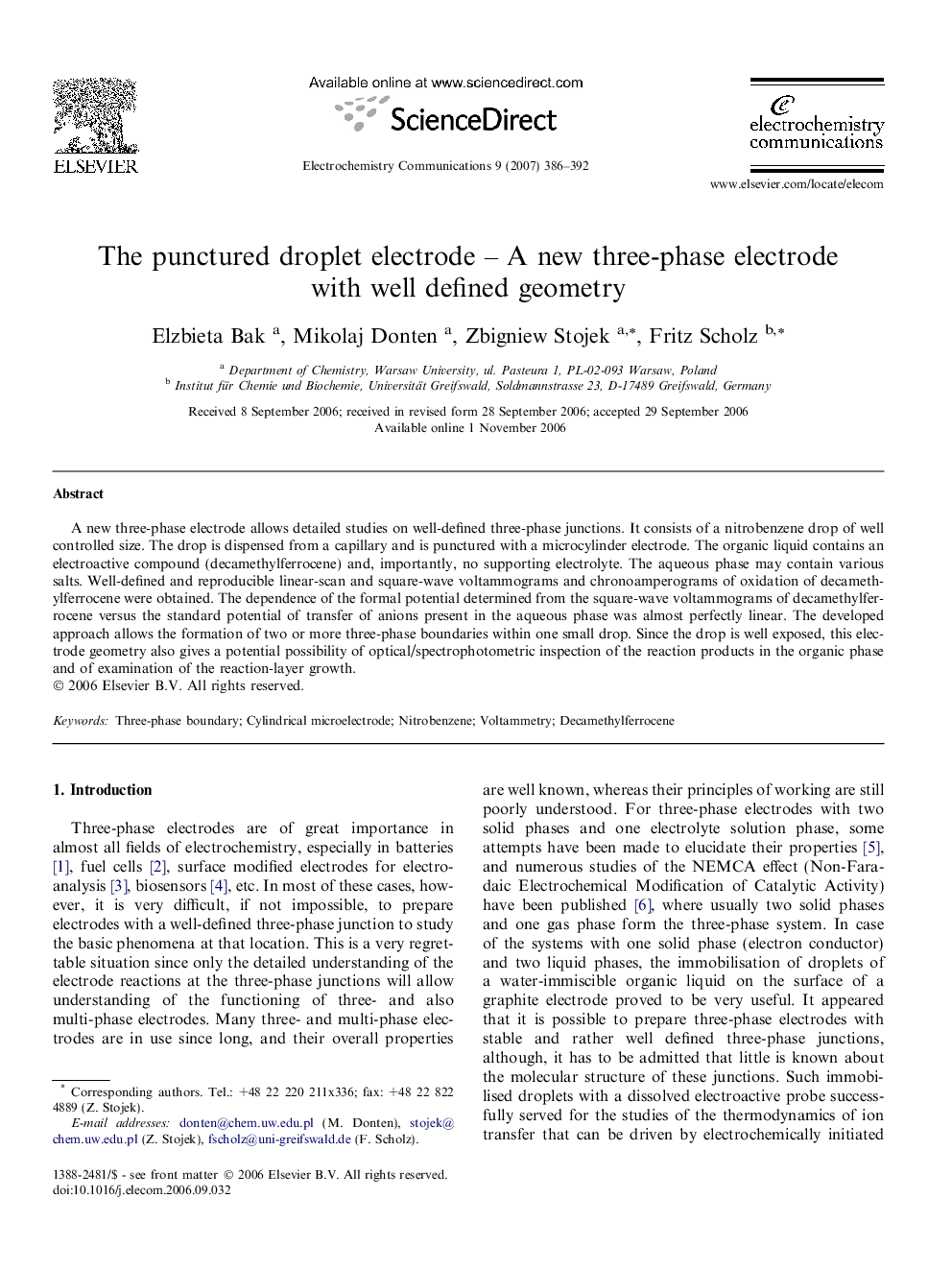| Article ID | Journal | Published Year | Pages | File Type |
|---|---|---|---|---|
| 182634 | Electrochemistry Communications | 2007 | 7 Pages |
A new three-phase electrode allows detailed studies on well-defined three-phase junctions. It consists of a nitrobenzene drop of well controlled size. The drop is dispensed from a capillary and is punctured with a microcylinder electrode. The organic liquid contains an electroactive compound (decamethylferrocene) and, importantly, no supporting electrolyte. The aqueous phase may contain various salts. Well-defined and reproducible linear-scan and square-wave voltammograms and chronoamperograms of oxidation of decamethylferrocene were obtained. The dependence of the formal potential determined from the square-wave voltammograms of decamethylferrocene versus the standard potential of transfer of anions present in the aqueous phase was almost perfectly linear. The developed approach allows the formation of two or more three-phase boundaries within one small drop. Since the drop is well exposed, this electrode geometry also gives a potential possibility of optical/spectrophotometric inspection of the reaction products in the organic phase and of examination of the reaction-layer growth.
